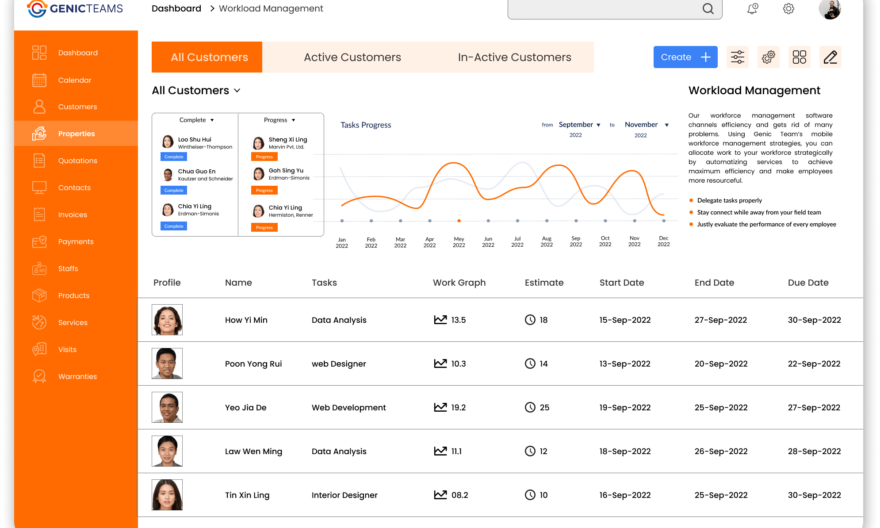
Marine operations rely on complex machinery, infrastructure, and skilled workers. To succeed, you need to manage your assets effectively. Poor asset management leads to costly breakdowns, delays, and lost profits. That’s where marine asset management becomes crucial.
In this blog, we’ll break down marine asset management. We’ll explain its role, challenges, and benefits. You’ll also learn effective marine asset management strategies for long-term success.
What Is Marine Asset Management?
Marine asset management involves maintaining and optimizing resources like vessels, ports, and equipment. It focuses on improving performance while reducing costs. This ensures assets operate efficiently and last longer.
The goal is simple: to balance costs, performance, and risk. For businesses in shipping, fishing, or offshore services, proper asset management is key to staying competitive.
Why Marine Asset Management Is Important
Managing assets poorly impacts your bottom line. It also increases risks and creates inefficiencies. Here’s why marine asset management is essential:
- Prevents Costly Downtime
Unplanned downtime halts operations and causes losses. Proper maintenance avoids this. - Improves Safety
Well-maintained assets reduce the chances of accidents and malfunctions. - Reduces Operational Costs
Preventive maintenance is cheaper than reactive fixes. - Prolongs Asset Life
Scheduled care keeps machinery running longer, delaying replacements. - Ensures Compliance
Strict maritime laws require assets to meet safety and environmental standards.
Without proper management, businesses face penalties, delays, and higher expenses.
Challenges in Marine Asset Management
Managing marine assets isn’t without difficulties. Some challenges are common across the industry.
- Harsh Environments: Saltwater, storms, and temperature extremes damage equipment.
- High Maintenance Costs: Large fleets or infrastructure need significant resources.
- Data Complexity: Tracking the condition of multiple assets is overwhelming.
- Labour Shortages: Skilled workers for inspections and repairs can be scarce.
Understanding these challenges is crucial. Addressing them requires smart planning and modern tools.
Key Elements of Marine Asset Management
Marine asset management isn’t just about fixing things when they break. It involves a structured approach to care and optimisation.
1. Asset Maintenance
Maintenance is the backbone of asset management. This includes:
- Regular inspections
- Preventive maintenance schedules
- Emergency repair protocols
2. Performance Monitoring
Tracking asset performance helps identify inefficiencies. Use tools to measure fuel usage, engine health, and equipment output.
3. Lifecycle Planning
Assets have a limited life. Plan for upgrades and replacements in advance.
4. Resource Allocation
Assign the right resources to the right tasks. Efficient allocation prevents overuse or neglect of assets.
5. Risk Management
Identify potential risks, like equipment failure or environmental hazards. Have contingency plans in place.
Effective Marine Asset Management Strategies
To achieve long-term efficiency, you need actionable strategies. Here are some effective approaches:
1. Create a Maintenance Schedule
Avoid waiting for things to break. Set up a preventive maintenance routine. Include daily checks and major overhauls in your plan.
2. Use Technology
Technology simplifies asset management. Consider:
- Predictive maintenance software
- IoT sensors for real-time monitoring
- Digital asset tracking tools
3. Train Your Workforce
A skilled team can identify problems early. Invest in regular training sessions for all staff.
4. Prioritise Sustainability
Use eco-friendly methods to reduce waste and emissions. Sustainability improves compliance and reputation.
5. Streamline Communication
Effective communication ensures teams stay updated. Use centralised systems to share information.
6. Document Everything
Keep records of inspections, repairs, and upgrades. Proper documentation helps with audits and future planning.
7. Monitor Costs
Track spending on repairs, fuel, and upgrades. Identify areas where costs can be reduced.
The Role of Technology in Marine Asset Management
Modern tools have revolutionised marine asset management. Digital solutions improve efficiency and accuracy.
Predictive Analytics
Predictive tools forecast equipment failures. This allows for timely repairs.
IoT Sensors
Internet of Things (IoT) devices monitor asset performance in real-time. They alert teams to anomalies immediately.
Asset Management Software
Software systems track asset health, maintenance schedules, and costs. These tools simplify complex tasks.
By adopting technology, companies can reduce risks and improve performance.
Environmental Benefits of Marine Asset Management
The maritime industry has a significant environmental impact. Oil spills, emissions, and waste are major concerns. Proper asset management reduces these risks.
- Preventive Maintenance: Prevents leaks and machinery failures.
- Energy Efficiency: Optimising operations lowers fuel consumption.
- Regulatory Compliance: Ensures adherence to environmental laws.
Sustainable practices not only protect the environment but also improve a company’s public image.
Financial Benefits of Marine Asset Management
Effective asset management is cost-effective in the long run. Here’s how:
- Reduced Repair Costs: Regular maintenance avoids expensive fixes.
- Lower Insurance Premiums: Good safety records lead to lower rates.
- Extended Asset Life: Delayed replacements save money.
- Operational Efficiency: Fuel and resource waste is minimised.
Investing in marine asset management is an investment in profitability.
How to Start Implementing Marine Asset Management
If you’re new to marine asset management, getting started can feel daunting. Follow these steps:
- Audit Your Assets: Start by listing all assets and their current condition.
- Set Maintenance Goals: Define what you want to achieve—better efficiency, lower costs, or longer lifespan.
- Choose the Right Tools: Invest in software and technology that suit your operations.
- Create a Team: Assign responsibilities for inspections, repairs, and tracking.
- Monitor and Improve: Review performance regularly and adjust strategies as needed.
Final Thoughts
Marine asset management is essential for any maritime business. It ensures assets operate efficiently and comply with regulations. Proper management prevents downtime, lowers costs, and improves safety.
By adopting effective marine asset management strategies, you can optimise performance and stay competitive. Focus on maintenance, use technology, and prioritise sustainability.
At Genic Assets, we specialise in providing cutting-edge tools and solutions for seamless marine asset management. Partner with us to enhance your operations and achieve long-term success. Start today to secure your place at the forefront of the maritime industry.



